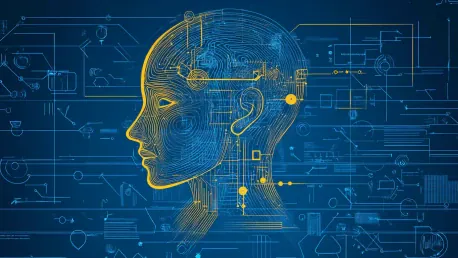The integration of AI tools in education is rapidly transforming the learning landscape. These tools offer a range of functionalities, from summarizing texts to creating multimedia content, which can significantly enhance the learning experience. However, this technological advancement also brings forth a set of challenges and ethical concerns that need careful consideration. This article delves into the multifaceted impact of AI study tools, exploring their benefits, risks, and the ethical implications of their use in education.
The Rise of AI Study Tools
Evolution and Capabilities of AI Tools
AI study tools have evolved from simple text summarizers to sophisticated applications capable of generating podcasts, altering text tones, and adjusting reading levels. These technological advancements cater to diverse learning preferences, making education more accessible and engaging. For instance, Google’s NotebookLM can transform lecture notes into audio formats, providing an alternative learning method for auditory learners. The progression in AI technology reflects a general trend towards diversifying educational resources to accommodate various learning styles and needs.
These developments have revolutionized how students interact with educational content, making it easier for them to assimilate information in ways that suit their learning habits best. With AI tools, students can now engage with course materials in interactive and personalized ways, which can potentially increase their comprehension and retention rates. However, such benefits come with a set of concerns, particularly from educators who worry that the ease and convenience offered by these tools might encourage students to rely too heavily on them, at the expense of developing essential cognitive skills.
Benefits for Neurodivergent Students
One of the most significant advantages of AI tools is their ability to support neurodivergent students. These tools help in organizing information, breaking down complex tasks, and providing personalized learning experiences that can address specific challenges faced by students with ADHD, dyslexia, and other learning differences. By utilizing AI tools, neurodivergent students can better structure their study routines, pace their learning more effectively, and gain insights through tailored content that meets their unique needs.
The ability to customize learning experiences ensures that every student has an equal opportunity to succeed, regardless of their learning difficulties. For instance, AI-driven applications can offer text-to-speech capabilities, visual aids, and interactive quizzes, which can significantly lighten the educational burden for students who might otherwise struggle with traditional teaching methods. This inclusivity is a monumental step forward in creating an educational environment where all students can thrive, yet it requires a balance to ensure these tools augment learning without replacing foundational educational practices.
Concerns of Oversimplification and Misuse
Historical Parallels and Modern Challenges
Educators have long been concerned about tools that simplify learning materials, such as CliffsNotes, and now see modern AI tools as causing similar issues. The primary fear is that AI tools, by providing instant summaries and explanations, might encourage students to bypass the intellectual work necessary for deep comprehension. The modern challenge is amplified by AI’s tendency to produce ‘hallucinations’—inaccurate information that can mislead students into believing false or incomplete narratives.
This reliance on oversimplified content can undermine the development of critical thinking and analytical skills, which are essential components of effective learning. Students might come to depend on these tools to artificially boost their understanding and performance without truly engaging with the underlying concepts. The historical parallels draw a cautionary tale for today’s educational technology, prompting educators to advocate for more thoughtful integration of AI tools into teaching strategies that promote genuine engagement and comprehension.
Reliability and Authenticity Issues
The reliability of AI-generated content is a significant concern that educators highlight due to its potential adverse impact on the learning process. Inaccurate summaries and explanations can lead to misconceptions and a lack of genuine understanding, fundamentally undermining the educational goals of fostering independent critical thinking. The authenticity of student learning experiences is at stake when AI-generated content becomes the primary source of knowledge without adequate verification and context provided by human educators.
Educators emphasize the value of engaging deeply with material, promoting caution against an over-reliance on AI tools. The development of critical analysis and problem-solving skills is jeopardized when students primarily depend on AI-generated summaries and responses. Addressing these concerns requires a balanced approach where AI tools are used as supplementary aids that support, rather than replace, rigorous academic processes that encourage deep learning and intellectual growth.
Ethical and Practical Implications
Academic Integrity and Authentic Learning
The ethical implications of AI usage in academics are multifaceted, touching upon issues of academic honesty and the authenticity of learning experiences. Students wrestle with questions about how much assistance from AI is appropriate, and whether using these tools compromises the integrity of their academic work. The convenience of AI tools can lead to over-reliance, creating a slippery slope where genuine learning is sacrificed for quick, AI-driven solutions. Clear policies and guidelines are crucial to delineate the boundaries of appropriate AI use in academic settings.
Establishing these boundaries ensures that students understand the importance of engaging actively and independently with their studies. The goal should be to use AI tools as enhancers that bring additional value without diluting the core educational experience. Such ethical considerations highlight the need for a balanced approach where AI tools complement traditional learning and do not become shortcuts for circumventing essential educational tasks and critical thinking development.
Environmental and Privacy Concerns
The extensive use of AI tools in education also raises significant environmental and privacy concerns. The energy consumption associated with running AI technologies contributes to their environmental footprint, raising questions about the sustainability of widespread AI adoption. Additionally, the data shared with AI service providers poses significant privacy risks. There is a pressing need for stringent data protection measures to safeguard sensitive student information from potential misuse or breaches.
Addressing these environmental and privacy concerns requires institutions and developers to adopt responsible practices that limit the ecological impact of AI technologies. Policies must also ensure robust data protection frameworks that uphold the privacy rights of students. By implementing these measures, the benefits of AI can be harnessed in ethical ways that do not compromise personal privacy or contribute adversely to environmental degradation.
Impact on Teaching and Learning Dynamics
The Role of Friction in Learning
Educators like Alexis Peirce Caudell and Marc Watkins argue that friction and struggle are integral to the learning process, as these challenges foster deeper understanding and long-term retention of knowledge. Instant AI summaries can undermine this aspect of education, reducing the cognitive effort required for learning and potentially diminishing the overall educational experience. By bypassing the necessary intellectual engagement, students miss opportunities to develop critical thinking and problem-solving skills.
The educational value of confronting and overcoming difficulty cannot be overstated. Friction in the learning process encourages students to engage more thoroughly with the material, prompting them to ask questions, seek clarification, and deepen their understanding. AI tools need to be integrated in ways that support, rather than replace, these essential aspects of education. There is a need for a balanced approach that leverages AI’s strengths while preserving the integrity of the cognitive challenges crucial to effective learning.
Crafting Meaningful Prompts
Engaging with content and crafting meaningful prompts is an educative process in itself, which AI tools might inadvertently undermine. The ease of generating polished outputs with AI tools can bypass these vital stages, reducing the rigor of the educational process. When students are too reliant on AI for ready-made answers and explanations, they miss important opportunities to develop critical thinking skills through formulating their own questions and drawing their own conclusions.
Educators stress the importance of students actively engaging with the material to develop these essential skills. Crafting meaningful prompts and responses requires intellectual effort and creativity, which are fundamental to deep learning and understanding. The role of AI should be to assist and enhance this process, not to simplify or shortcut it. Ensuring students maintain an active role in their education is crucial for fostering a robust learning environment where AI tools serve as helpful, rather than central, components of the educational journey.
Advancements and Accessibility
Multimedia Learning Tools
AI tools have significantly expanded the range of learning resources available to students, offering multimedia outputs such as podcasts and interactive content that cater to different learning styles and preferences. These tools can make learning more engaging and accessible, particularly for students who struggle with traditional text-based materials. By providing diverse material formats, AI tools enable students to explore information in ways that resonate most effectively with their personal learning styles.
This expansion of resources can revolutionize the learning experience by making it more inclusive and adaptable to individual needs. Students who have difficulty with reading and text comprehension can benefit from audio and visual aids, enhancing their ability to learn and retain information. The introduction of AI-driven multimedia learning tools represents a significant step toward personalized education, allowing each student to benefit from resources tailored to their unique learning preferences and challenges.
Support for Diverse Learning Needs
The ability of AI tools to provide personalized learning experiences is particularly beneficial for students with diverse learning needs. These tools can offer tailored support and resources, helping bridge the gap for students facing unique educational challenges and ensuring they have equal opportunities to succeed. Through adaptive learning algorithms, AI tools can adjust the difficulty level and presentation style of content to match the student’s needs, providing an individualized learning experience that fosters better outcomes.
For instance, students with dyslexia might benefit from tools that highlight text or convert written material into audio, while those with attention deficit disorders might use AI tools to set reminders and organize tasks effectively. This support is critical in creating an equitable learning environment where every student can thrive, regardless of their learning differences. By leveraging the capabilities of AI, educators can create more inclusive classrooms that address the diverse needs of all students, promoting an environment of equal learning opportunities.
Developing Frameworks for AI Integration
Establishing Boundaries and Policies
As AI tools become more integrated into educational practices, establishing clear frameworks that delineate acceptable AI assistance has become increasingly critical. Creating boundaries and policies ensures that these tools support genuine learning, rather than impeding it. In collaboration, educators, policymakers, and technology developers must work together to build guidelines that promote positive educational outcomes and prevent misuse or over-reliance on AI tools.
These policies should encourage the use of AI tools as enhancers that complement traditional teaching methods, ensuring that students remain engaged in essential processes such as critical thinking and problem-solving. Clear boundaries can help mitigate risks associated with over-dependence on AI for academic tasks, preserving the integrity of learning experiences while leveraging AI’s potential to enrich the educational landscape. Thoughtful policy-making is key to harnessing AI’s benefits responsibly and ethically in the educational realm.
Ensuring Supportive Functionality
Tech companies have a responsibility to design AI tools that enhance learning rather than simply automate tasks, focusing on functionalities that encourage students to engage deeply with content and develop critical thinking skills. By prioritizing supportive features, these AI tools can become valuable assets in the educational landscape, offering substantial benefits without compromising the essence of the learning process. Integrating feedback from educators can ensure these tools are aligned with educational objectives and effectively address students’ needs.
Developing supportive functionalities involves going beyond basic automation and looking at ways AI can facilitate deeper cognitive engagement. For instance, AI tools could provide interactive simulations, personalized feedback, and real-time problem-solving assistance to help students grasp complex concepts more thoroughly. This approach ensures that AI remains a tool that aids learning rather than a crutch that diminishes the educational process’s rigor. By focusing on these aspects, tech companies can contribute positively to the evolving educational ecosystem.
Balancing Instant Access and Genuine Learning
The Dichotomy of AI Tools
The integration of AI tools in education is transforming the learning landscape at a rapid pace. These advanced tools offer a wide array of functionalities, ranging from summarizing complex texts to creating engaging multimedia content, which can significantly enhance the overall learning experience for students. By automating routine tasks, AI allows educators to focus more on personalized instruction and support.
However, this technological leap also presents a set of challenges and ethical concerns that demand careful scrutiny. Issues such as data privacy, algorithmic bias, and the potential for over-reliance on technology must be addressed to ensure that the use of AI in education is both effective and equitable. The indiscriminate use of these tools could inadvertently widen existing educational inequalities if not properly managed.
This article delves into the multifaceted impact of AI study tools, providing a balanced view of their benefits, the associated risks, and the ethical implications of their deployment in educational settings. While AI has the potential to revolutionize education, it is crucial to approach its integration thoughtfully and responsibly, ensuring that it serves to complement, rather than replace, the human elements that are vital to effective teaching and learning.









